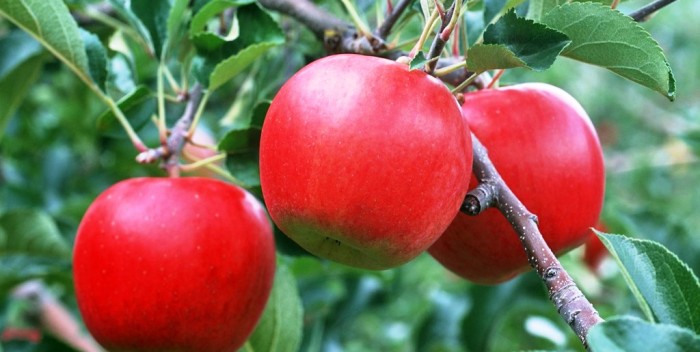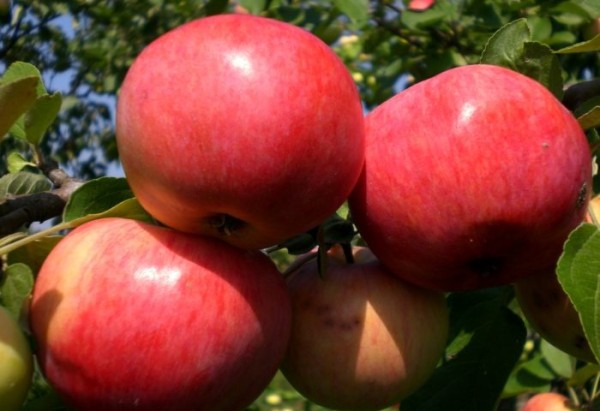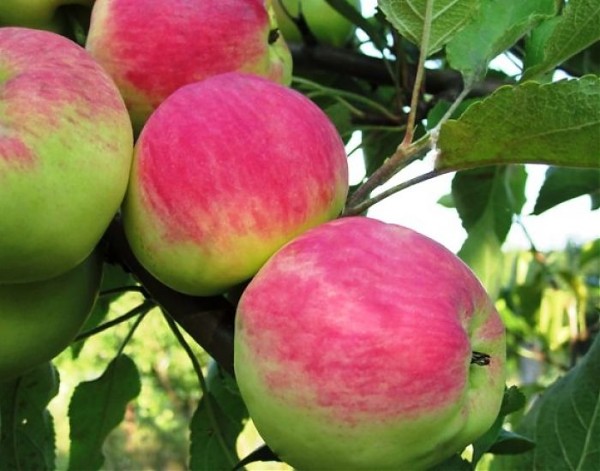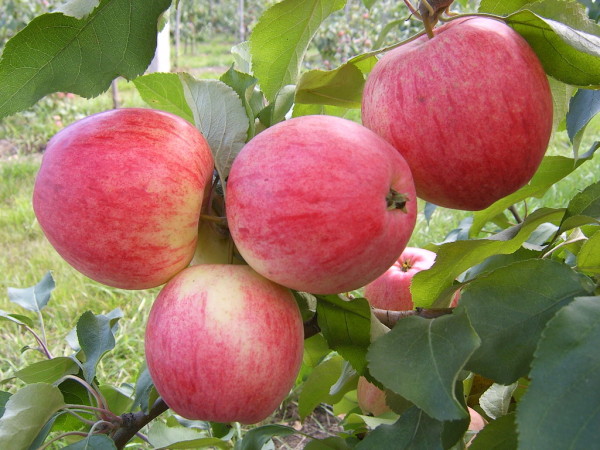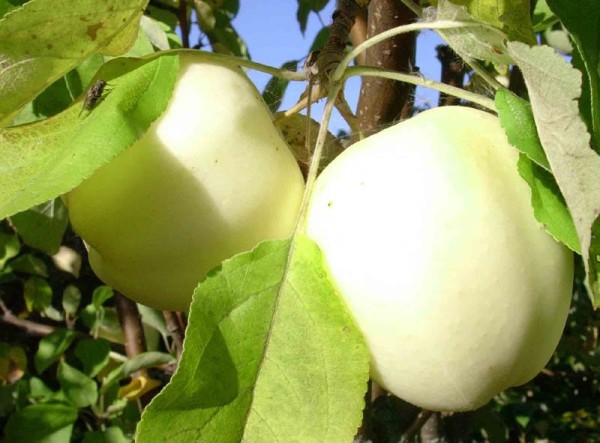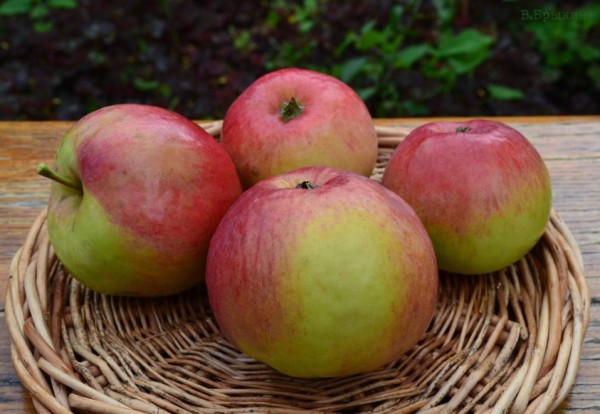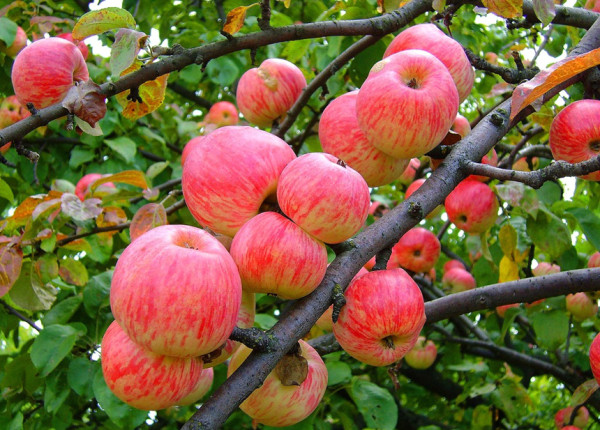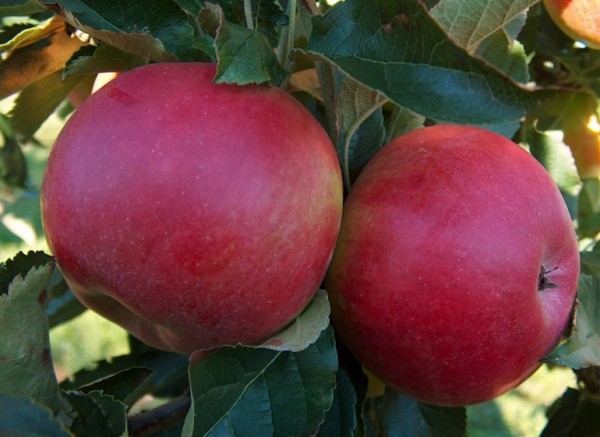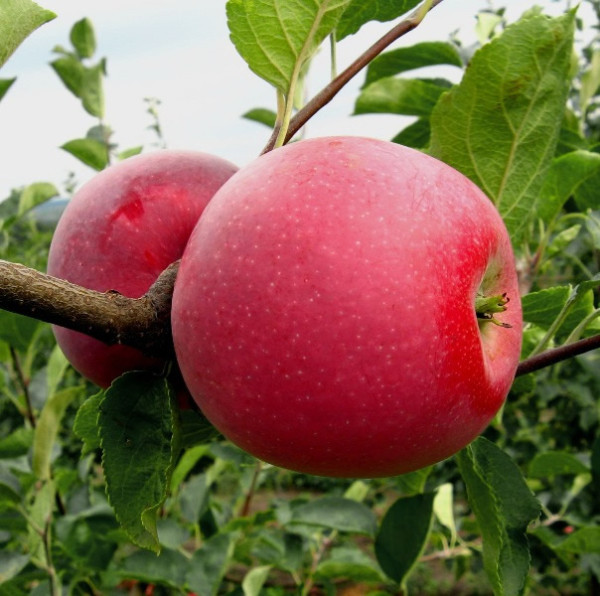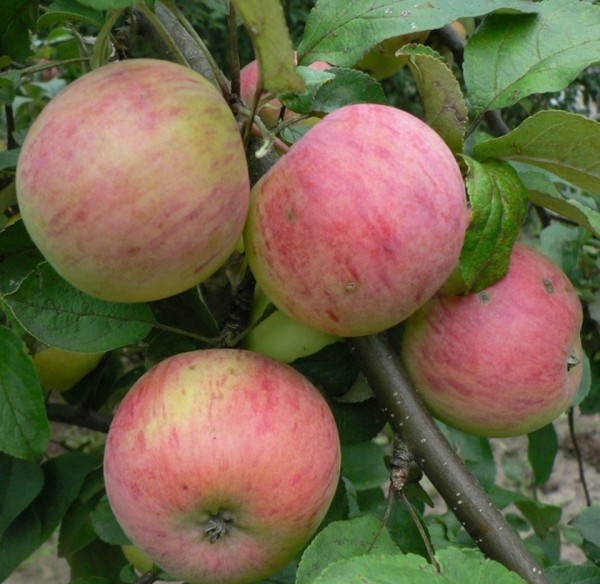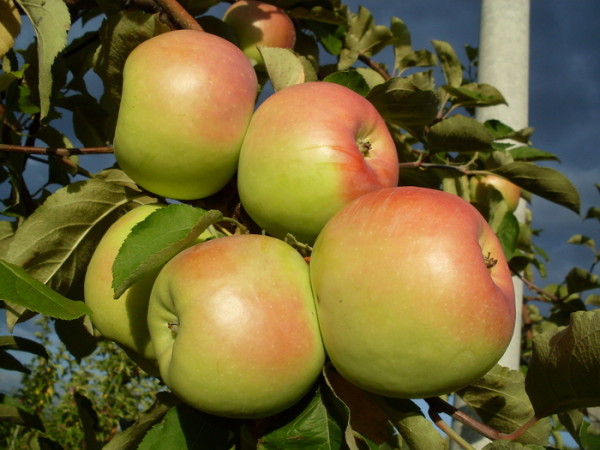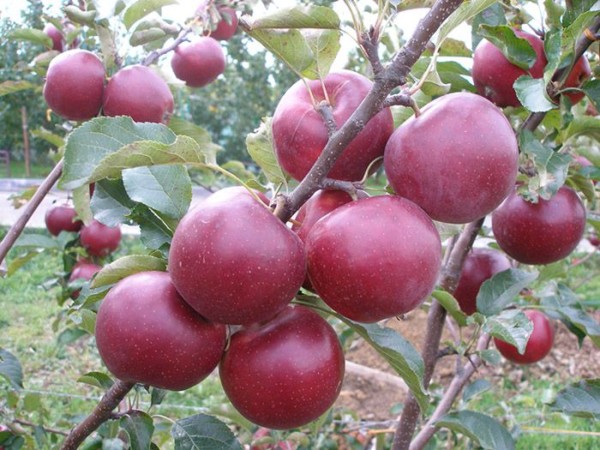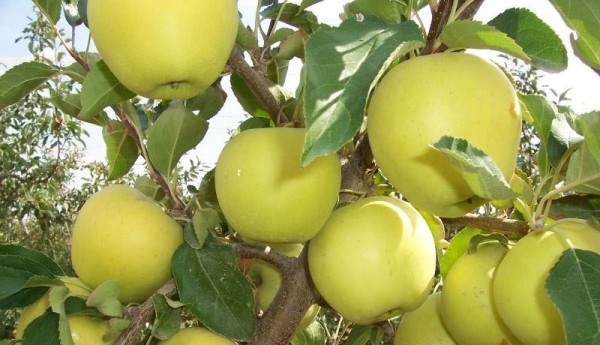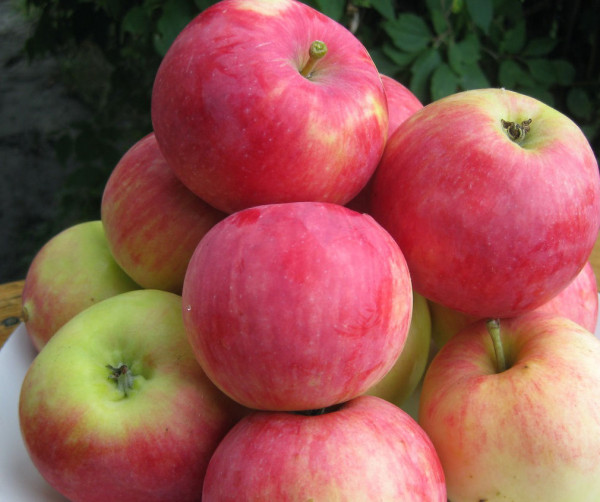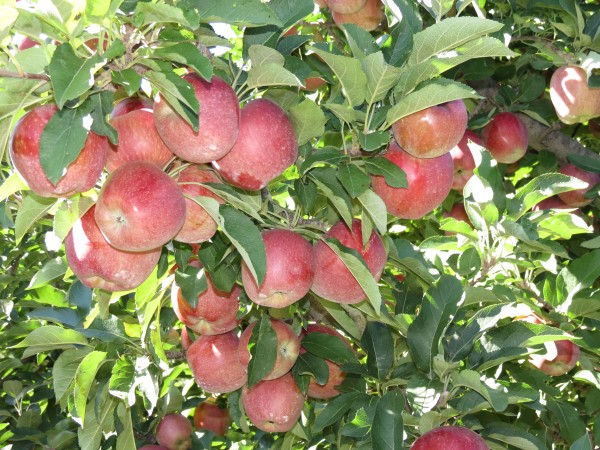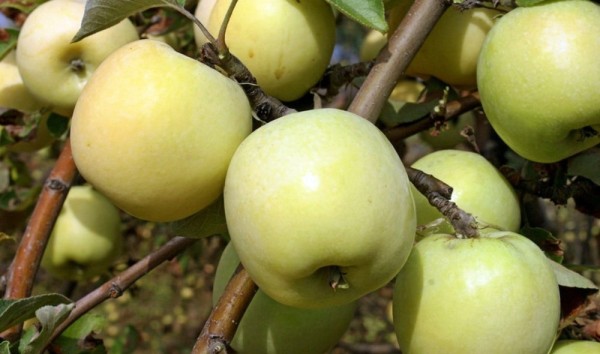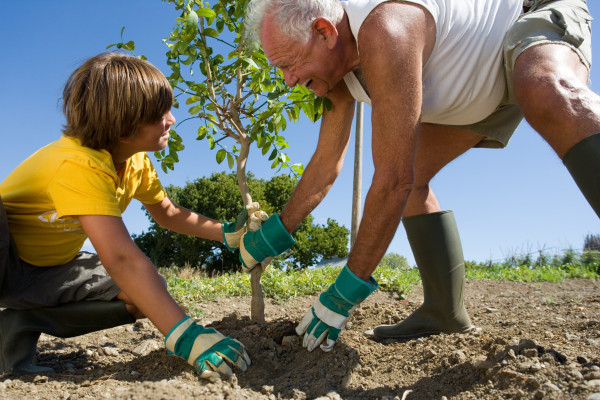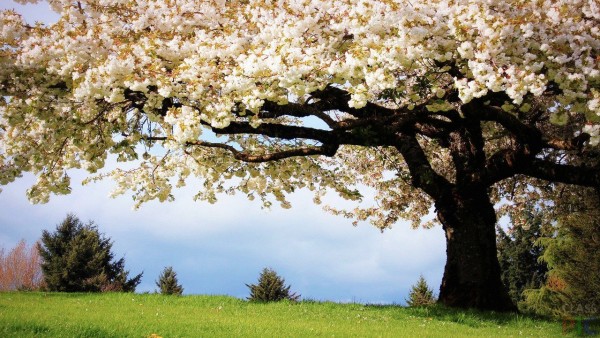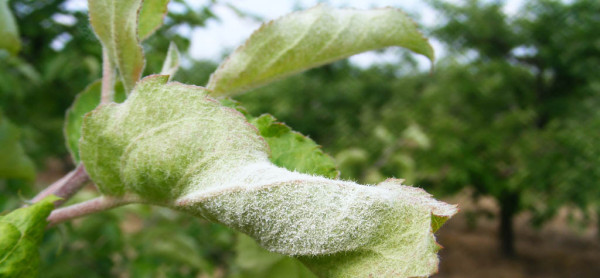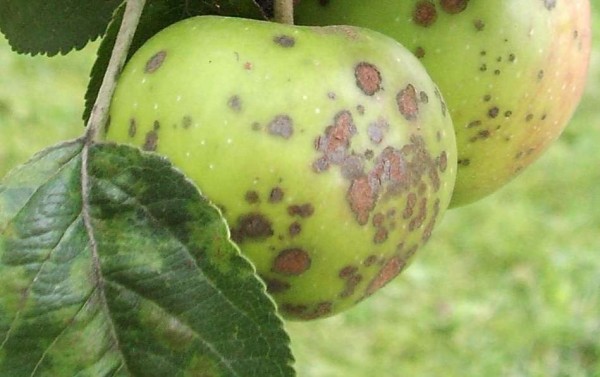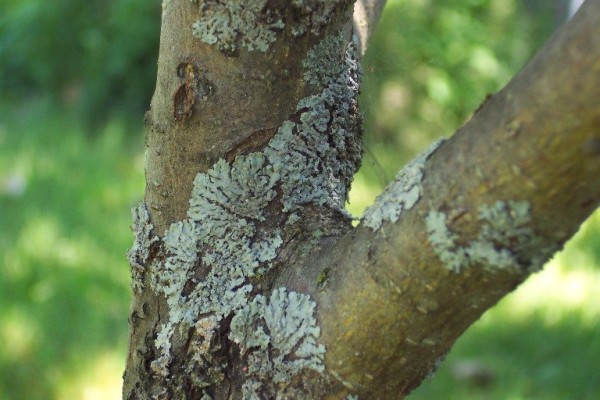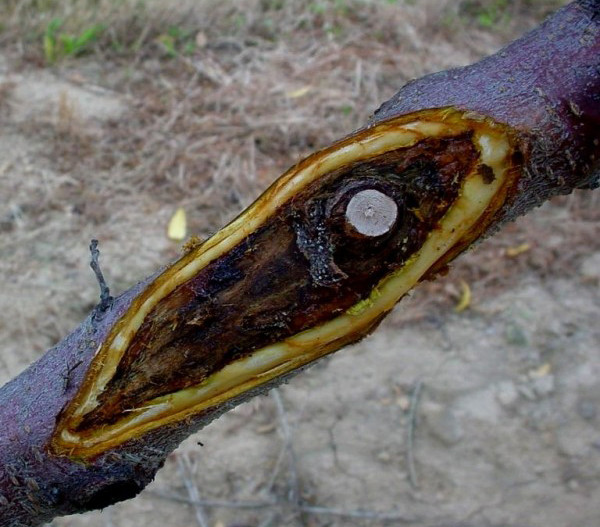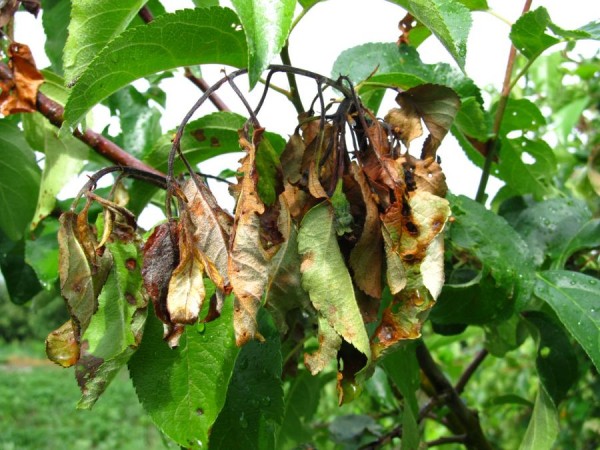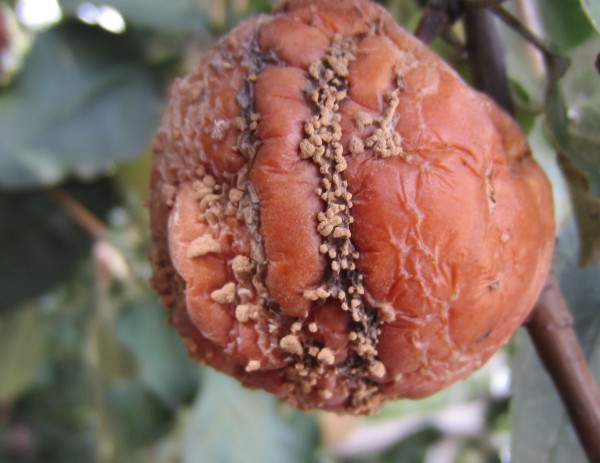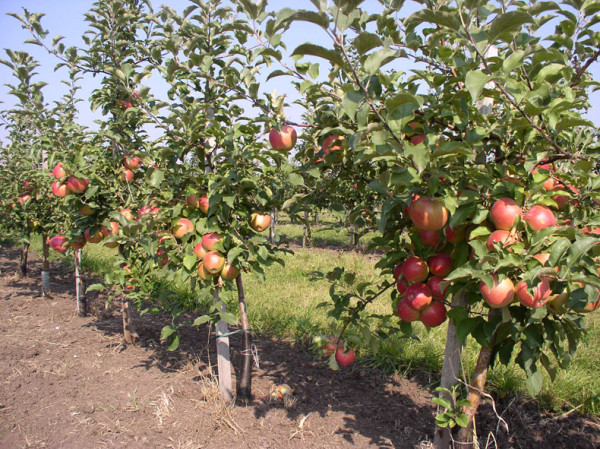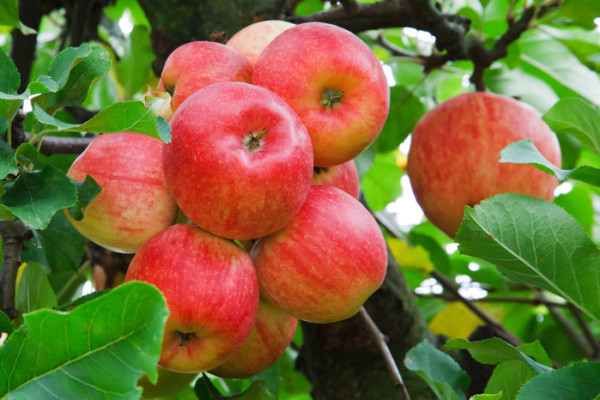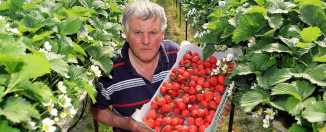How to grow an apple tree
A variety of berries, shrubs and fruit trees can grow in a summer cottage and in your own garden, but an apple tree can be found, probably, in every business executive. Having carried out a competent planting and providing proper care, from year to year the apple tree will delight its owner and his household with a rich and useful harvest. If this beautiful tree is not yet on your site, this article is for you. Here we will consider what varieties of apple trees exist, which ones are popular and why, and consider the process of planting and subsequent care.
Content
Apple varieties
Scientists managed to count more than 10 thousand varieties of apple trees, and this is very, very much. Nevertheless, from this huge number, over time, special favorites of gardeners were singled out, which are grown from year to year and give tasty fruits. The varieties presented below are divided into summer, autumn and winter:
- Summer ripens very early, approximately from July. Such apple trees give very delicate fruits that cannot be stored for a long time. Therefore, the harvested crop must be consumed within a maximum of three weeks, otherwise the apples will deteriorate. But among summer representatives there is a very wide variety of varieties that differ in both taste and structural characteristics.
- Autumn apple trees yield at the very beginning of autumn. Unlike summer ones, they last longer and can be in perfect condition until mid-winter. Perfect for preservation.
- "Centenarians" are winter varieties, which ripen at the very end of autumn. Due to their strong structure, such fruits can be stored almost until summer.
Now let's take a look at the favorites from each category.
Summer varieties
Candy - the name itself suggests that apples have a very sweet taste. They have a very beautiful appearance with a characteristic brown, yellow or reddish blush. The shape of the fruit is smooth, round, the flesh is white, tender and juicy. Candy apples ripen somewhere in the middle of August, and their shelf life does not exceed two weeks. They do not tolerate transportation well. These apple trees are unpretentious to care for, have a strong immunity to disease, tolerate winter well, and will delight with the first fruits in four to five years.
Grushovka is a very old, but hitherto popular variety, which also ripens in August. The maximum shelf life of fruits is up to four weeks. Fruits are small to medium in size, rounded but slightly flattened. The color ranges from pale green to pink. The pulp is very tender and friable, juicy with sourness and a very pleasant aroma. The tree is tall and hardy. The pear tree gives a high yield and begins to bear fruit relatively quickly.
The Mantet variety, originally from Canada, produces slightly oblong rounded fruits that stand out for their bright color. There is practically no acid in the fruits, they themselves are dense and juicy, with a light creamy pulp. The shelf life of fruits is from two to three weeks. The tree bears fruit in the fourth or fifth autumn, i.e. soon enough. It has strong immunity to major diseases, but it does not tolerate severe frosts without problems.
Another Canadian apple that ripens in late summer is Melba. Fruits are medium, usually large, slightly elongated. The color of the fruit is slightly yellowish with a blush on one side. The flesh of these apples is snow-white, the taste is sweet and sour with a light aroma of sweets. Fruiting occurs on average in the fourth year, tolerates frost well.
One of the most popular and beloved by many varieties is White filling. You can enjoy the fruits already at the beginning of July. An adult apple tree can grow up to five meters in height. The fruits are round and greenish at the beginning, but as they ripen they turn yellow, almost white. The White filling has a very aromatic pulp, slightly loose and coarse-grained, moderately sour. So that the quality of apples does not decrease, it is very important to remove the fruits on time, avoiding over-ripening. The harvested crop deteriorates very quickly, so they cannot be left for storage. Fruiting occurs approximately in the fifth year.
Autumn varieties
A widespread autumn variety is Zhigulevskoe. The pulp of Zhiguli apples is coarse-grained, tender and colored in a pleasant cream color. There is a slight sourness. Ripening occurs in late August and early September. They retain their original appearance and taste until December. Zhigulevsky variety pleases its owner with a plentiful annual harvest. It is resistant to diseases, but the tree is afraid of serious frosts.
A fairly old variety of apples - cinnamon striped. Ripening occurs mainly in the month of September. The apples are yellowish-green in color with occasional red stripes. The pulp is often yellowish, but there are also reddish streaks, the taste is delicate, dessert. Special gourmets catch a light cinnamon aroma, which is where the name actually came from. The harvested crop lays successfully until January and does not deteriorate. This variety of apple trees bears fruit from about the eighth autumn. This is not to say that the yield of the tree is abundant, but not small either.
The Canadian Macintosh is characterized by medium-sized fruits, yellowish-green in color with purple veins. It is very popular in commerce due to its external beauty, taste, and good transportability. Among the disadvantages of this apple tree are weak immunity to diseases and weak frost resistance.
By crossing the varieties Mackintosh and White filling, the variety Glory to the winners was obtained. Fruits ripen at the very beginning of autumn, and the harvested crop retains all its characteristics right up to mid-winter. The fruits of Slava to the winners are rather large, oblong with a greenish color and a red blush. These apples have an interesting pleasant aroma. They are going through the transportation perfectly. If you create ideal conditions for the apple tree and provide competent care, then the first fruits can be harvested in the second year. Otherwise, everything is postponed to the fourth or fifth winter. It bears fruit abundantly and is very resistant to frost, but does not survive drought well.
Streyfling became the result of folk selection that came from the Baltic states. This apple tree has large yellow-green fruits with brown stripes. They can taste like raspberries, very juicy and sweet and sour. Harvested in early autumn and kept cool until the first month of winter. Fruiting occurs on average in the eighth autumn.
Winter varieties
Sinap Orlovsky is characterized by golden, relatively large, slightly sour fruits. Fruiting of an apple tree occurs in the fourth autumn and continues almost every year.
The winter representative of Welsey apple trees was bred in the United States. They are medium-sized and round-shaped fruits, severely flattened. Welsey has a pleasant, subtle scent. Interestingly, the taste of apples taken from the same tree can change from year to year. Fruits ripen at the start of autumn and lie quietly right up to February. The first fruits begin to appear in the fourth autumn and in abundant quantities. It has excellent resistance to almost all diseases and survives frosts well.
Golden Delicious apples can also be harvested in September and stored until March. The apple tree often gives large fruits, a slightly elongated conical shape. On the inside, the apples are dense and surprisingly juicy. If you use them some time after collection, then you can notice a delicate taste. The Golden Delicious variety has American roots, it begins to bear fruit regularly on average in the seventh autumn. Frost is going through normally, and drought is problematic.
Pepin Saffron - apples of domestic origin. Fruits are yellow-green in color with an attractive red blush. The taste is reminiscent of grapes, sweet, spicy and has a unique aroma characteristic only of it. Fruits ripen closer to October, and can be stored until March-April. Bears fruit in abundance, starting in the fifth autumn. The apple tree requires regular pruning. In persistent severe frosts, the tree may freeze slightly, but at the same time it often recovers well itself.
Jonathan is a very popular variety, originally from the USA, endowed with a lot of advantages. Fruits are usually large or medium, yellow-green in color with a burgundy blush. They are characterized by very strong, crispy, dessert pulp. The first crop can be harvested in the fifth autumn. It is also worth noting that the apple tree bears fruit very abundantly. Ripening begins in October, and the harvested crop is stored until April. Disease immunity and frost resistance are average.
We will complete our selection with all the familiar and beloved Antonovka apples. Beautiful golden yellowish fruits with a unique and unlike anything else aroma. The flesh of these apples is white, very crispy, with a slight sourness. The apple tree begins to bear fruit on average in the seventh year. The great advantage of this tree is that even young seedlings can perfectly tolerate severe frosts, and it is also resistant to diseases and very unpretentious to care for.
Planting an apple tree
A good period for planting an apple tree is spring and autumn. Each of the mentioned periods has its pros and cons, let's take a closer look.
Planting in autumn gives the seedling time to develop. During the winter, it grows well into the soil, strengthens its roots, and by spring it begins to bloom actively. Speaking of the month, it is better to allocate the beginning of October for this activity. But it is better to engage in autumn planting in the southern regions of the country, or on the black earth. The soil for the apple tree should be loose and allow air and water to pass through without problems. And now step by step:
- Prepare a hole for the apple tree, preferably a month before planting. Organize a groove 70 cm and about a meter in diameter.
- Install a stake in the center of the hole so that it protrudes 35 centimeters above the ground level. To prevent the bottom of the stake from rotting, burn it first.
- Prepare a mixture for a tree, where a fertile layer of earth will enter (at the time of digging a hole - the very top of the earth) fertilizers and organic matter. Place all this tightly in the hole.
- At the onset of October, start planting - organize a small hole, sprinkle a little black soil on the bottom and place a seedling. The peg is necessarily located from the south of the trunk. The seedling should be buried so that the root collar of the trunk looks out five centimeters above the ground level.
- Tie the seedling tightly to the peg so that it doesn't settle.
- Pour 3/4 buckets of water into the hole and cover with earth.
A significant bonus of planting in the spring is that by winter the apple tree will already get stronger and will be able to survive the cold well. In this case, it is better to land in either early May or late April. A distinctive feature of spring planting is abundant watering to avoid drying out the root system. You need to prepare the hole about a week before the crucial moment. With high-quality soil, it is enough to go deeper by 60 cm, with low quality soil, it is better to dig 70 centimeters, and the diameter in both cases is from 60 to 80 cm.Before spring planting, be sure to abundantly moisten the roots of the seedling, leaving it in water for a day.
Apple tree care
Reproduction of apple trees
You can propagate apple trees by seeds or cuttings. The first method is used exclusively by nurseries, because it is problematic and time-consuming for gardeners. To propagate an apple tree by cuttings, it is important to find a stock, which can be a seed grown or just a wild apple tree. A stalk of the variety is grafted to its root system, which in the end needs to be obtained. The seed of success is just in the right rootstock, so be careful that the work does not go down the drain, but brings a satisfactory result.
Apple tree transplant
If your site does not have black soil, then it is better to transplant in the spring. A similar transplantation time should be chosen if the fall was dry and cold. In the spring, it is better to replant the apple tree on a cloudy day. On black soil, or, if the autumn is warm, then the transplant can be done in the fall.
The apple tree is transplanted as follows:
- Prepare the necessary tools that will be needed in the process: ropes, garden supplies, stretchers, water, etc.
- Prepare a hole where you want to transplant the apple tree. Expand the volume of the hole by one and a half times relative to the earthen clod of the treated tree. Thoroughly clean the weed pit. Treat the entire surface of the pit with organic matter and limestone, if the soil is with a high level of acidity.
- Prepare the pegs to which you will tie the apple trees, and there should be three or more of them.
- Mark the sides of the horizon with paint.
- If possible, the tree should be dug with basic roots and an impressive clod of earth. Do not shake off the ground from the roots.
- Before digging up the apple tree, wrap its trunk with a soft cloth to avoid damage to the trunk. It is also better to place a clod of earth near the tree in a net. Carefully bend the skeletal branches to the trunk. Do not forget that the less time passes between digging and a new planting, the better, so it is better to do all the manipulations at once.
- When setting up the apple tree in a new location, make sure that the root collar rises above the ground.
- Cover everything with fertile soil so that there are no gaps.
- In a new place, the apple tree must be thoroughly watered.
- Tie the tree to the stakes.
Pruning apple trees
It is problematic to describe in words such a process as pruning apple trees, so we suggest that you familiarize yourself with an educational video in which everything is clear and understandable.
Diseases of apple trees
In the springtime, a dangerous parasite, a powdery mildew, activates its work, which destroys an apple tree with powdery mildew. It affects the bark, leaves, buds, shoots of an apple tree, regardless of its age. The main reason for the appearance of the parasite is called excessive humidity in the air and soil. At the sites of the lesion, a plaque is formed from an off-white to gray tint. Over time, plaque can change color and additionally appear numerous black specks. At the very beginning of the disease, it will not be difficult to remove plaque, but the further, the denser it becomes. Under the influence of the progression of the fungus, the foliage of the affected apple tree begins to turn yellow, curl and dry out, and new shoots are inhibited in development. The yield of the affected tree is reduced by up to 50%. Even a harsh winter does not kill the parasite, it simply reduces its activity, which returns to its normal state with the arrival of heat. But the apple tree itself with such a disease may not survive the winter.
The fight against powdery mildew is protracted, and besides, no one guarantees the absence of a relapse. For the prevention of the disease, it is useful to treat gardens with the Topaz fungicide, it is also used in the initial stage of the lesion. When the harvest is harvested, the apple trees are treated with 1% Bordeaux liquid. You can dissolve a couple of tablespoons of copper sulfate and a large spoonful of soap in a bucket of water and spray the composition on the apple trees. In spring and autumn, be sure to cut and destroy branches and leaves that are affected by the fungus.
Another, no less rare disease that often affects pears and apple trees is scab. It spreads by spores through drops of water, comfortable conditions for the formation of disease - a long rainy spring. Clear signs of the presence of the disease can be called brown-olive bloom on the leaves of the tree, and then the fruits themselves are affected, on which numerous cracks and dark gray spots appear. Through the cracks in the fruit, a variety of infections penetrate, which provoke rotting of the fruit. The peculiarity of the parasite is that it does not in any way affect the rate of development of the tree, the latter continues to develop as before, and the fungus uses it. The main measure of scab control is prevention. Be sure to clean up crumbling leaves, dead branches and fruits, and before flowering, use appropriate liquids, for example Bordeaux or Fitosporin M. To combat scab that has already occurred, use fingucides by spraying trees before and after flowering.
The basidiomycete, which causes a milky shine, destroys the leaves and twigs of the apple tree. If you do not resist the pest, the tree will inevitably die slowly. A clear symptom of disease affection - the areas acquire a gray and milky color with a pearlescent sheen. The affected branches cease to bear fruit, and those that exist develop poorly, the branches dry and fall off. The infection occurs on the branches, gradually advancing towards the trunk, which gradually kills the entire tree. The main reason for the appearance of sores is a lack of minerals, illiterate watering and freezing of the bark. Never plant seedlings in low-lying areas.
Cytosporosis is a fungus that attacks the bark of a tree. The reasons why a tree can get sick are watering errors, soil poverty. The lesion occurs, as a rule, on weak trees or on those that have defects in the bark. A clear symptom of the presence of the disease is the formation of dark ulcers on the branches and trunk. Over time, there is a progression of the resulting ulcers, the lesions deepen and move further. Ignoring the disease leads to the death of the tree. Therefore, you need to ensure that the tree trunks are undamaged, and after pruning, be sure to treat the wounds with clean linseed oil or garden varnish.
A bacterial burn, aka bacteriosis, is activated by the action of the bacteria of the gram-negative bacillus. Trees of all ages can be affected, and distribution begins from above, moving downward. In most cases, the infection "arrives" in the garden along with new seedlings and cuttings. The factors that push for development are warm rains and high temperatures. Signs of damage appear as dark, watery spots, due to which the foliage becomes as if charred and burnt. At the same time, despite their appearance, the leaves do not leave the branches of the tree. But the affected flowers turn dark brown and fall off. Affected fruits take on a dark, unhealthy appearance and are inhibited in growth. To protect your garden from infection - when buying new seedlings, pay attention to their quality to make sure they are healthy.
At the end of August, when the period of fruit flowering comes, there is a risk of moniliosis. For its appearance, it will be enough that the apple tree is infected with scab or stalk. The spread of infection occurs from a sick fetus to a healthy one through contact. Initially, a small speck can be seen on the fruit, which begins to grow very quickly, and the apple itself begins to darken and become soft. Such fruits cannot be eaten!
Dwarf apple trees
Dwarf trees are ideal for those who do not have the opportunity to allocate enough space for a full-fledged garden. Such mini-apple trees are formed by grafting the desired variety onto a special stock. Dwarf babies reach a height of no more than four meters, and the fruits from them can be reaped as early as 2-3 autumn. Needless to say, harvesting from them is very convenient and pleasant.
How much does the apple tree bear?
It is difficult to answer this question unequivocally. This factor depends on many nuances: apple varieties, how high-quality and competent the care of the tree will be, in what climate it will grow, on the presence of diseases, etc. As practice shows, with a positive development, the fruiting of apple trees reaches 40-50 years, and for some it even longer. Therefore, love your apple trees, provide them with full care, and then they will delight you with a rich and tasty harvest.
Why the apple tree does not bear fruit
There can be many reasons why the apple tree does not bear fruit, we will consider some of them.
- The lack of fruiting can occur due to the young age of the apple tree itself. Not all varieties can boast of early fruits, on average, the first harvest comes only on the 7th autumn, or even later. If you do not know the planting time or have planted a tree relatively recently, study the apple variety and find out the features of the tree, perhaps you are in a hurry.
- If you are sure that the age of the apple tree has approached maturity, but there are still no fruits, then the cause may be incorrect planting or, even more likely, incorrect pruning or its absence.
- If the apple tree is mature, blooming but not fruitful, the problem may be lack of pollination. The apple tree needs cross-pollination, therefore, if there are no other apple plantings nearby, then the fruits may be absent, but this is rare.
- Flower buds do not ripen enough. Weak flowers have a short life cycle, which is not enough for sufficient pollination. Owners of southern varieties of apple trees who plant in the northern strip face such problems. A similar problem with flowers occurs due to an excess of nitrogenous fertilizers. Flowers can be eaten by the flower beetle, which also acts as an obstacle.
- If you notice that, despite decent fruiting, the taste and overall quality of apples are getting worse from year to year, the reason for this may be incorrect pruning. Learn how to properly care for an apple tree and follow the instructions. The tree should receive enough light and therefore should not have a dense crown.
